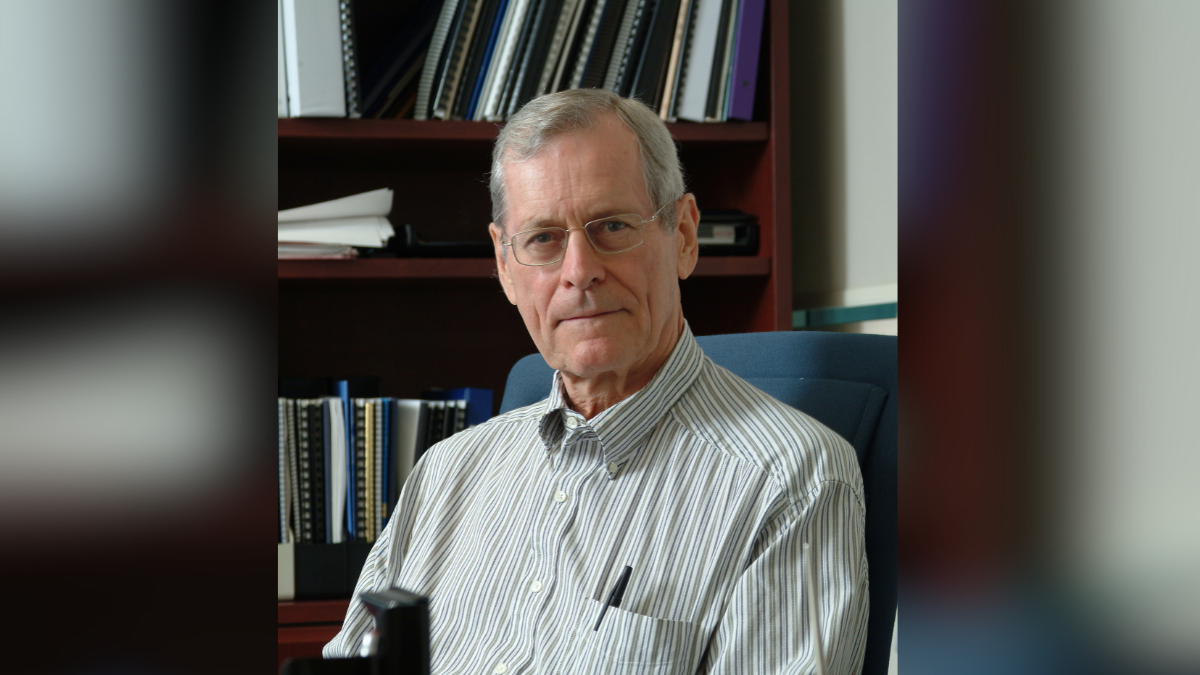Mobile Menu
- Education
- Research
-
Students
- High School Outreach
- Undergraduate & Beyond: Community of Support
- Current Students
- Faculty & Staff
- Alumni
- News & Events
- Giving
- About

The University of Toronto is celebrating the life and work of James Till, whose research demonstrated the existence of stem cells and fundamentally transformed the field of medical science.
He is being remembered for pathbreaking work, alongside Ernest McCulloch, that ultimately paved the way for bone marrow transplants and other stem cell-based therapies as well as regenerative medicine approaches aimed at repairing or regenerating damaged tissues and organs.
"The U of T community is deeply saddened by the passing of James Till, a visionary scientist whose discovery of stem cells with Ernest McCulloch revolutionized medicine and biomedical research,” says Leah Cowen, vice-president, research and innovation, and strategic initiatives at U of T.
“Their groundbreaking work not only laid the foundation for a new field of science but has saved and improved countless lives worldwide through stem cell-based therapies.
Born and raised on a farm in Lloydminster, Alberta, Till pursued his passion for science at the University of Saskatchewan, earning a BSc in 1952 and an MSc in physics in 1954. He went on to obtain a PhD in biophysics from Yale University in 1957. Soon after, he joined U of T as a postdoctoral fellow to work with Harold Johns, a physicist at the Ontario Cancer Institute, now known as the Princess Margaret Cancer Centre at University Health Network.
At the OCI, Till began collaborating with McCulloch, then an assistant professor of medical biophysics at U of T’s Faculty of Medicine, forming a partnership that would revolutionize biology.
In 1961, the researchers conducted experiments that involved transplanting bone marrow cells into mice that had previously received radiation. Several days later, they noticed bumps on the spleens of mice that had received a transplant and discovered that each lump contained a colony of cells that could give rise to the multiple cell types that make up human blood. These landmark findings provided the first description of blood-forming stem cells.
Their 1963 study, which was published in the journal Nature, further demonstrated that each colony of blood-forming cells originated from a single cell. That same year, Till and McCulloch collaborated with renowned molecular geneticist and U of T professor Lou Siminovitch to show that these bone marrow cells were capable of self-renewal, a hallmark trait of stem cells.
Till was appointed as a faculty member in the department of medical biophysics at U of T’s Faculty of Medicine in 1965 and retired in 1997. During that time, he served in numerous leadership roles at the university and was appointed University Professor in 1984.
After their groundbreaking work in the 1960s, Till continued to advance stem cell research for over 15 years, exploring the potential of stem cells to differentiate into various cell types and the feasibility of isolating viable stem cells.
In the 1980s, Till expanded his research interests to focus on other aspects of cancer care, including quality of life, research ethics and the decision-making capacities of cancer patients. He also explored the role of the Internet as a source of information, support and advocacy, and examined the impact of this information on patient care.
Till received many honours in recognition of his work including the Canada Gairdner International Award, appointment as an Officer of the Order of Canada and induction into the Canadian Medical Hall of Fame. In 2005, he and McCulloch received the Albert Lasker Award for Basic Medical Research.
Till died in Toronto on May 18 at age 94. His legacy endures through the transformative research he inspired and the many scientists he mentored, whose work continues to advance stem cell science and improve lives worldwide.
“Professor Till’s contributions were instrumental in establishing Toronto as a world leader in regenerative medicine and in bringing hope to patients everywhere,” says Cowen.
“His vision, humility and dedication will inspire generations of researchers to come."
With files from the University Health Network.

